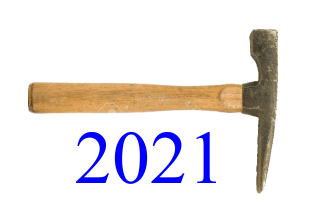Sydney Stashin


M. Sc. Thesis
(PDF - 74.5 Mb)
During the Late Miocene to Mid-Pliocene (Messinian to Zanclean), global mean annual surface temperatures (MAT) averaged >1°C warmer than present and transitioned to much cooler climates over the next million years. Today, the MAT is 19°C cooler than the Pliocene MAT for the same location in the Canadian Arctic Archipelago (CAA), indicating a disproportionate thermal change in the Arctic owing to a shallower Pliocene latitudinal temperature gradient. There are few sites in tectonically quiescent areas that record the response of both onshore and offshore environments during this time of dramatic climate change. Arguably, one of the best locations to capture this climatogenic landscape and basin evolution would be in a polar setting where ice-free Late Cenozoic landscapes evolved to glacial environments earlier and more intensely than lower latitude sites. The Late Miocene to Pliocene Beaufort Formation (BFm), currently extending along the western CAA, is a fluvial deposit which once formed a contiguous coastal plain. The BFm represents the eastern limit of a westward thickening clastic wedge that extends across the continental shelf and into the Canada Basin. The BFm is partially coeval with the Iperk Sequence (IpS) offshore, a thick, currently submarine package of Late Miocene-Pleistocene fluvial and marine sediment in the Banks–Beaufort Basin. The BFm and IpS appear to have captured the response to the Pliocene climate transition, independent of tectonic uplift, and provide a useful study area to evaluate climatogenic basin evolution in the High Arctic.
The research goals of this thesis are to interpret and correlate the offshore and onshore stratigraphy to establish the history of sedimentation and progradation, the timing of faulting, and the factors controlling the basin’s response to climate change in the High Arctic. Using recently released 2D seismic reflection data from ION Geophysical, a detailed seismostratigraphic framework of the IpS offshore Banks Island is compared with the equivalent seismostratigraphy in the Beaufort–Mackenzie Basin, previously an analogue for the Banks–Beaufort Basin. Eight sub-sequences were defined, and seismic facies analyses were conducted to correlate units across the shelf and upper slope to formulate a climatostratigraphy and interpret the depositional environments present, including the transition from onshore to offshore facies. A preliminary fault analysis within and at the mouth of M’Clure Strait reveals that at least this portion of the Northwest Passage does not appear to have been a graben system. Instead, the apparent absence of inter-island channel-parallel faults cutting Pliocene or younger deposits and the clear indication of deep erosion through the IpS and BFm supports the hypothesis that M’Clure Strait and Amundsen Gulf were likely formed by fluvial then glacial erosion. We present the first TCN cobble isochron burial age (6.20 ± 0.20(1σ) Ma) of the BFm on Prince Patrick Island, NWT, near the type locality. This age is the oldest numerical date for any BFm or equivalent unit in the CAA and supports previous biostratigraphic results inferring Late-Miocene environments on the island. The interpreted seismostratigraphy and new chronology contribute to our understanding of Late Cenozoic basin evolution in the CAA. This can be used to inform other ongoing Arctic investigations, such as the observed disparity between paleoenvironment and paleoclimate records among sites in the BFm, or the causes and consequences of deposition of such a large sediment volume during a climate transition, and spatio-temporal differences in the deposition of the BFm.
Keywords:
Pages: 181
Supervisor: John Gosse



